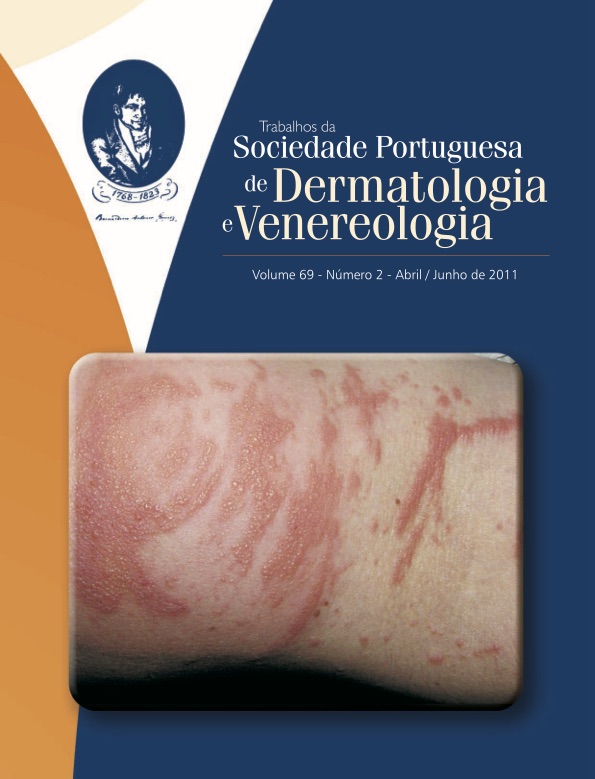ERYTHROPOIETIC PROTOPORPHYRIA – A Family Study and Report of a Novel Mutation in the FECH Gene
Abstract
Erythropoietic protoporphyria (EPP) is a rare inherited disorder of heme biosynthesis caused in most patients by a deficient activity of the enzyme ferrochelatase (FECH), with a consequent accumulation of protoporphyrin (PP) in various tissues. We report a 16-year-old male (index case) with EPP characterized by acute episodes of painful photosensitivity in the photoexposed areas since his early infancy, permanent changes, microcytic anemia, thrombocytopenia and mild hepatic dysfunction. His 18-year-old sister presented slighter acute symptoms and had no chronic changes. Lesional biopsy performed in index case disclosed perivascular deposition of PAS positive hyaline material. Rimington-Cripps test was positive in both cases and PP erythrocyte levels were markedly elevated, but normal in their asymptomatic parents and younger brother. Genetic study in both patients and their mother (father’s sample not available) revealed heterozygosity for a novel mutation (c.1052delA) in FECH gene of both children, and heterozygosity for the hypomorphic allele IVS3-48T>C in all of them. This report confirms the “pseudodominant” inheritance pattern observed in most studied families, explained by the combined presence of a disabling FECH mutation and a common intronic polymorphism affecting the counterpart allele (IVS3-48T>C). The mutant allele was probably inherited from the father. This is the first description of a Portuguese family with EPP characterized at the molecular level.
Downloads
All articles in this journal are Open Access under the Creative Commons Attribution-NonCommercial 4.0 International License (CC BY-NC 4.0).








